May 13 (Lunar calendar: March 24), 2023 Saturday | Dawnxisoul393art
Today we went to the Buddhist temple of "Chuk Lam Shin Yuen" in Hibiscus Hill, Tsuen Wan District, New Territories, Hong Kong to pay homage to the Bodhisattvas and to sketch and paint. After arriving at Tsuen Wan by boat and subway, we took minibus No. 85 on Siu Wo Street in Tsuen Wan to the gate of Chuk Lam Shin Yuen. Chuk Lam Shin Yuen was surrounded by beautiful scenery, with a panoramic view of the new town of Tsuen Wan and a distant view of Rambal Strait and Tsing Yi Island. Chuk Lam Shin Yuen was beautiful. The gate building of Chuk Lam Shin Yuen was painted with the vermilion characters "Chuk Lam Shin Yuen". It is far away from the downtown and returns to nature. Many plants are planted in the temple, such as magnolia, fire dragon fruit, kumquat tree, and papaya tree. Walking in the Zen courtyard, we also met a lovely little squirrel. Chuk Lam Shin Yuen temple was the largest Buddhist temple in the central area of Hong Kong. It was founded by Rongqiu old monk and covered an area of more than 4 hectares. The pagoda in the temple was solemn and majestic, with the simple and elegant decoration.
The temple is one of the largest temples in Hong Kong. Its founder, Master Rong Qiu, became a monk when he was young. Master Rongqiu was later ordained at Longchang temple on Baohua Mountain in Nanjing, belonging to the Huanglong sect of Linji sect. Master Rongqiu helped others to found the South China Buddhist College in Hualin Temple, Guangzhou. During this period, Master Rongqiu dreamed of Bodhisattva three times at night and was instructed by Bodhisattva to go to Hong Kong to find a blessed place to build a temple to propagate Buddhism. Master Rong Qiu came to Hong Kong from Mainland in 1928 and found a place to build a temple in Futu Mountain, Tsuen Wan. Master Rongqiu led his disciples, with the help of various parties, through all the hardships, to build the "Chuk Lam Shin Yuen“ temple in 1932. During World War II, when Hong Kong fell, Master Rongqiu led his disciples to dig land for farming, self-sufficiency, and tide over the difficulties.
In the late 1940s, many monks went south to avoid chaos. The Master Rongqiu welcomed anyone who came. Master Rongqiu was always willing to create a magnificent and solemn hall for the temple to accommodate believers, worship Buddha and chant scriptures. In 1970, the land policy of the Hong Kong government changed, and the Master bought the place where today's "Main Hall" was located at a premium. In 1975, the foundation was laid for the construction of the "Main Hall". Master Rongqiu was exhausted and died in 1976. His disciples complied with his last orders, completed various projects in 1982. At that time, it was the largest temple in Hong Kong. The current Buddhist Abbot of the temple is Master Yizhao. Master Yizhao became a monk in 1941 and was disciplined in the Nanhua temple in 1944. He once followed Master Xuyun and benefited a lot. Later, he came to Hong Kong, served in the temple. Master Yizhao often traveled around giving lectures, which was widely legalized.
Maitreya Buddha was enshrined in the "Heavenly King Hall", with a peaceful and happy face. There was a "Ford Temple" on the left side of the "Heavenly King Hall". Behind the "Heavenly King Hall" was the "Weituo Hall". Behind the "Weituo Hall", there was a large "incense burner" in front of the stone steps. There were pavilions and flower beds on the left and right, next to which towering trees were planted. "Bell Tower" and "Drum Tower" were separated on both sides. The Main Hall was majestic and majestic. The Hall was dedicated to the statues of Sakyamuni Buddha, Medicine Buddha, and Amitabha Buddha, and was flanked by the statues of the golden-bodied Luohan.
Illustrated by dawnxisoul393
The statue of Guanyin Bodhisattva was enshrined behind the "Mahavira Hall". The Old Temple Hall and the Futu Treasure Hall were built on the top of the steps. The Futu Treasure Hall was dedicated to the Kṣitigarbha Bodhisattva, and the murals of Buddhist stories were engraved on the wall. It could be seen from the top beam that the hall was rebuilt in 1953. The corridors on both sides of Futu Hall ran through the east and west buildings, and there were 200 rooms in the courtyard. There was a Koi pond in front of Futu Hall, with Zen houses on both sides. The hall was rebuilt in 1953. There were natural overlapping rocks behind the Futu Hall, which looked like a "pagoda", and below it were two caves, such as "Miaolian Cave" and "Guanyin Cave". In addition, there were tourist attractions such as "Purple Bamboo Forest", "Guanyin Wanghai Cave", "Luohan Cave", "Donglin Buddhist Hall" and "Sutra Worship Platform". There were iron flags hanging in the hall. Guanyin Bodhisattva was worshipped behind the Main Hall. After leaving the Main Hall, we saw a rockery pool and a pavilion garden.
Brahma in Thailand was very famous. Brahma has four Buddha faces, representing health, career, love, and wealth respectively. It seeks prosperity in business on the front, happiness in marriage on the left, peace in the body on the right, and wealth in the back. It is one of the most popular Buddhist statues in Thailand. Brahma belief has been brought into full play in Southeast Asia, Hong Kong, Macao, Taiwan, especially Thailand. Brahma is the God of the creation of Brahmanism in India and the creator of Sanskrit letters. Brahma is one of the three gods of Brahmanism in India. He is the God who created heaven and earth and the father of all living beings. Brahma has boundless magic power, grasps the glory and wealth of the world, and has noble magic power. Brahma has four sides, eight ears, eight arms, and eight hands. The objects held in each hand have profound meanings: one holds the command flag (representing universal mana), one holds the Buddhist Sutra (representing wisdom), one holds the conch (representing blessing), and one holds the bright wheel (representing eliminating disasters, subduing demons and destroying troubles).
One holds a power battle (representing supreme achievement), one holds a kettle (representing responsive response), one holds a rosary (representing reincarnation), and one holds a chest seal (representing blessing). Regardless of "seeking career". Praying for love, wishing for wealth, and ensuring peace can take care of the people in the East, West, North, and south. Brahma is full of four integrity characters: compassion, benevolence, fraternity, and justice. It is also the four boundless hearts of Buddhism, compassion, joy, and giving up. Many people will pay homage to Thailand, pray for good luck, see the craft of Thai Buddha statues and the situation of people paying homage to Bodhisattvas. In fact, we can also visit Brahma in Hong Kong. There is a golden Pagoda in Chuk Lam Shin Yuen temple, which is the pagoda of Brahma. Relatively speaking, the history of Brahma with the highest incense in Chuk Lam Shin Yuen temple is very new. According to the staff, this four-sided Buddha was invited by believers from Thailand in 1982, and the Thai Monk King personally came to preside over the opening ceremony.
Illustrated by dawnxisoul393
Many believers pay homage to this Brahma, which can be regarded as one of the most visited Buddhas in Hong Kong. We saw orchids in front of Brahma, so we could imagine the heyday of incense. There were many small shops selling offerings in the temple. They provided gold foil, orchids, lotus lamps, and incense candles needed to worship the Brahma on all sides. People gave the gold foil to the staff and sticked it on Brahma statue. The staff were very enthusiastic and seriously guided everyone to worship. First, put the orchids around the Brahma statue clockwise, worshiped three times on each side before placing them, and then put the lotus lamp on each side, which was also worshiped three times on each side, Finally, making a wish with incense and candles. After three times of worship on each side, putting down seven incense and candles on each side.
Original by dawnxisoul393,




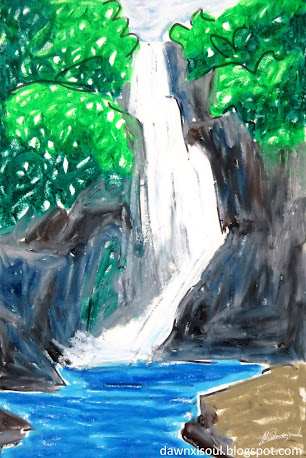
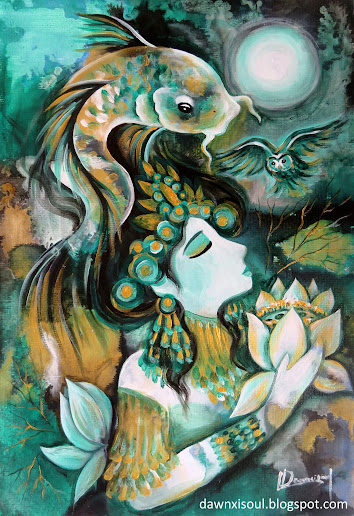

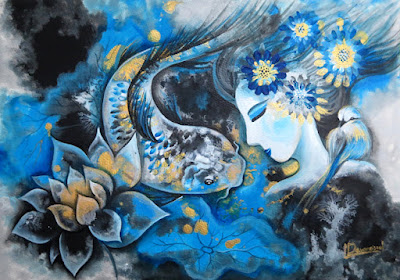
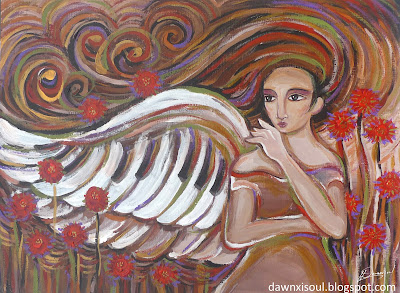
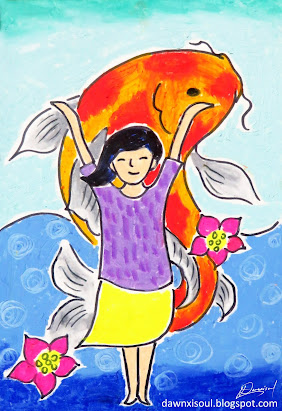


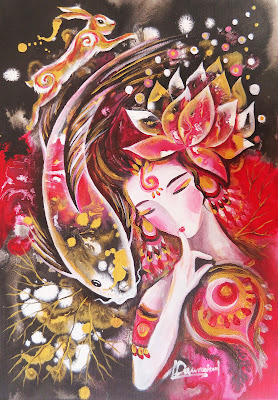
Comments
Post a Comment